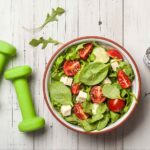Want to switch to a healthier diet but not sure what kind of food makes the cut? The best place to start is by reading food labels as they come packed with all the nutritional information you need to make a smart and healthy choice.
How To Read Food Labels
Your food labels can provide a lot of information which can assist you in your decision making. Apart from the name of the product and the brand name, here are some of the main things you will need to pay attention to:
Ingredients List
These will always be listed in order from largest to smallest by weight and can give you a good idea of what your foods contain. Reading this list is especially important for those with allergies who need to avoid certain foods.
Nutritional Information
This will provide details regarding the average amount of energy, fat, protein, sugars and sodium in the food. Energy (kilojoules) determines how much energy your body will get from the food. Proteins and carbs are essential building blocks that provide fuel and energy for the body, while fibre can help you feel full. Knowing whether the fat is total or saturated is also important. Saturated fats can negatively affect health and pave the way towards heart disease. It is always a good idea to try and limit your sugar intake and reading the labels will help you in making this choice. Similarly, too much salt is not advised as it can lead to high blood pressure.
Percentage Labelling
This tells you how much of the main ingredients it contains, thereby helping you identify whether your food has a lot of artificial ingredients. The percentage labels allow you to compare with other products and make a healthier choice.
Food Additives
These are usually a list of all the preservatives that have been added to the product. Products that contain more natural ingredients usually have less additives and are always the healthier option.
Use-By or Best-Before Date
This lets you know how long your product will maintain its freshness. Furthermore, the use-by date can also help you assess whether the product has more preservatives. You can expect products with a longer expiry date to usually contain more preservatives.
Servings Per Pack
By knowing how many servings you will be consuming, you can better understand the true nutritional value of the product. It may appear to be the healthier option but may not be beneficial when considered as a whole serving.
Comparing Food Products
Knowing how to compare products will help you choose the healthier product. When comparing products, look at the food as a whole, rather than just a single nutrient as you need to determine how all the ingredients will affect your body. With that in mind, don’t forget to consider these factors when comparing food products:
Dietary Needs
It is important to understand your dietary requirements as this plays a huge role in determining what kind of food you must eat. For instance, everyone’s energy and kilojoule needs are different. Roughly knowing what your energy needs are can help you make better food choices.
If you have allergies, there may be some foods you need to avoid in order to prevent any serious reactions or health risks.
Similarly, if you have any pre-existing health conditions, you will need to follow specific nutritional requirements. For example, if you have high blood pressure, you will need to avoid salt.
Choose Health
Wherever possible, try to favour products with low sugar, low saturated fat, low sodium, high fibre and high protein. In the long run, this will prove beneficial for you, giving your body plenty of nutrients and energy, while keeping you feeling full for longer.
Health Star Rating System
The Health Star Rating is designed to help you choose healthier packaged foods at a glance. The rating is between ½ to 5 stars which helps you determine which foods have a higher risk of obesity and other chronic diseases. It can help you compare similar foods and find the healthiest choice. However, the stars only relate to similar foods and not all foods across the board. For example, even if you have picked a 5 star chocolate, it will not be as healthy as an apple. Therefore, you still need to be mindful of what is making up your diet.
Tips for Healthy Food Choices
Here are some top tips you can follow for a healthier diet:
- Formulate a meal plan to help save time and money, control portions and avoid unhealthy options. Even if your meal plan is airtight, it is all for naught if you keep snacking in between meals. Make sure to include healthy snacks in your meal plan, such as nuts, fruits and granola bars, so you have lots of healthy alternatives.
- Change how you shop for groceries. Pick products with higher Health Star Ratings and low sugar and sodium. Swap out white bread for whole grain bread to feel fuller and get lots of good benefits. Instead of soft drinks, opt for natural juices or health juices so that you can stay refreshed while gaining some nutrients.
- Remember to always stay hydrated! Drink plenty of water: at least 6–8 glasses per day.
- Choose lean proteins like poultry, white fish, Greek yoghurt, and beans and lentils, to stay full without all the extra fat.
Find Healthier Products Today
It is always important to have a balanced diet to make you’re your body gets all the nutrients it needs. This is why, being well-informed on the nutritional value of your food is a great way to ensure you make smart meal choices for a healthy lifestyle.















